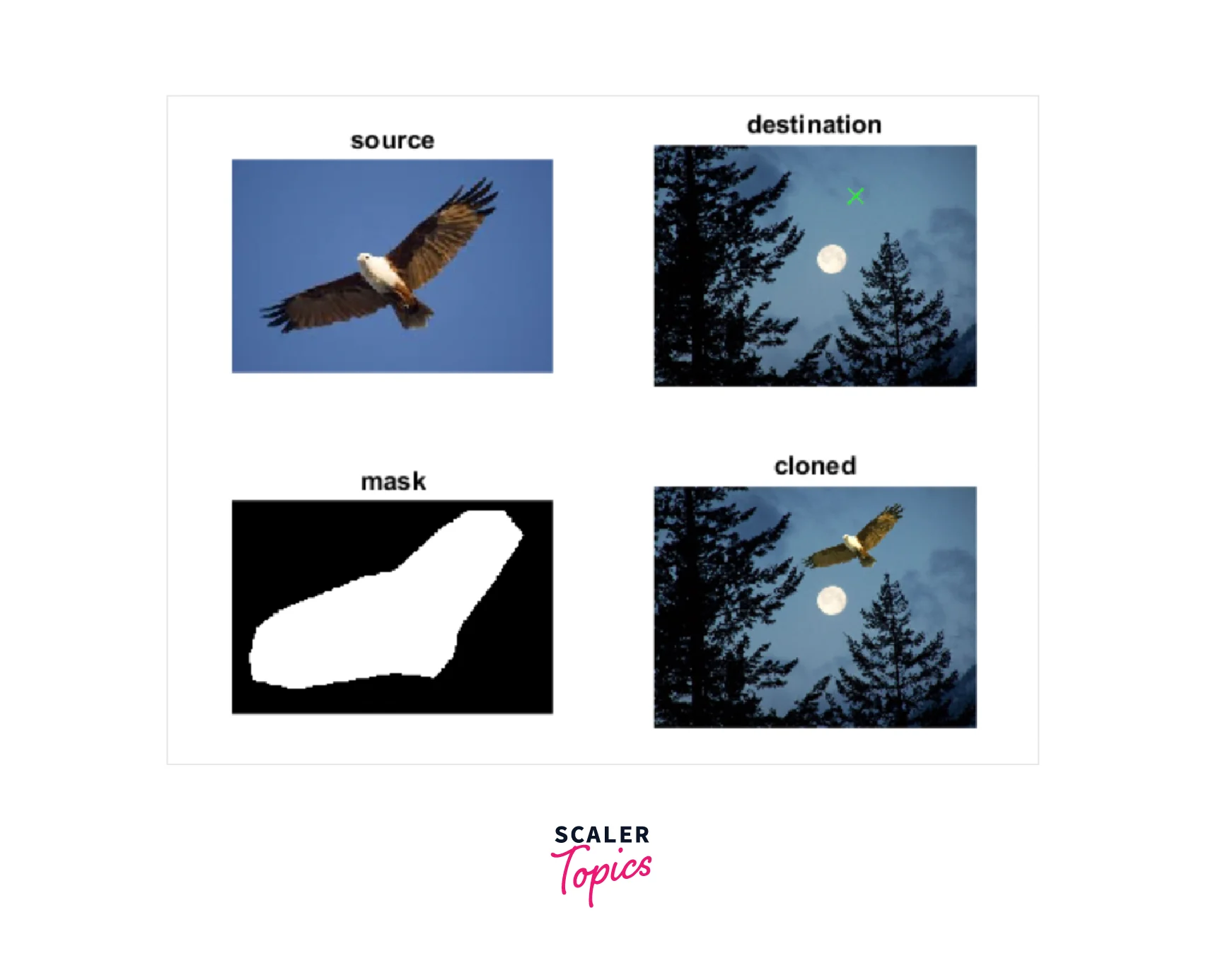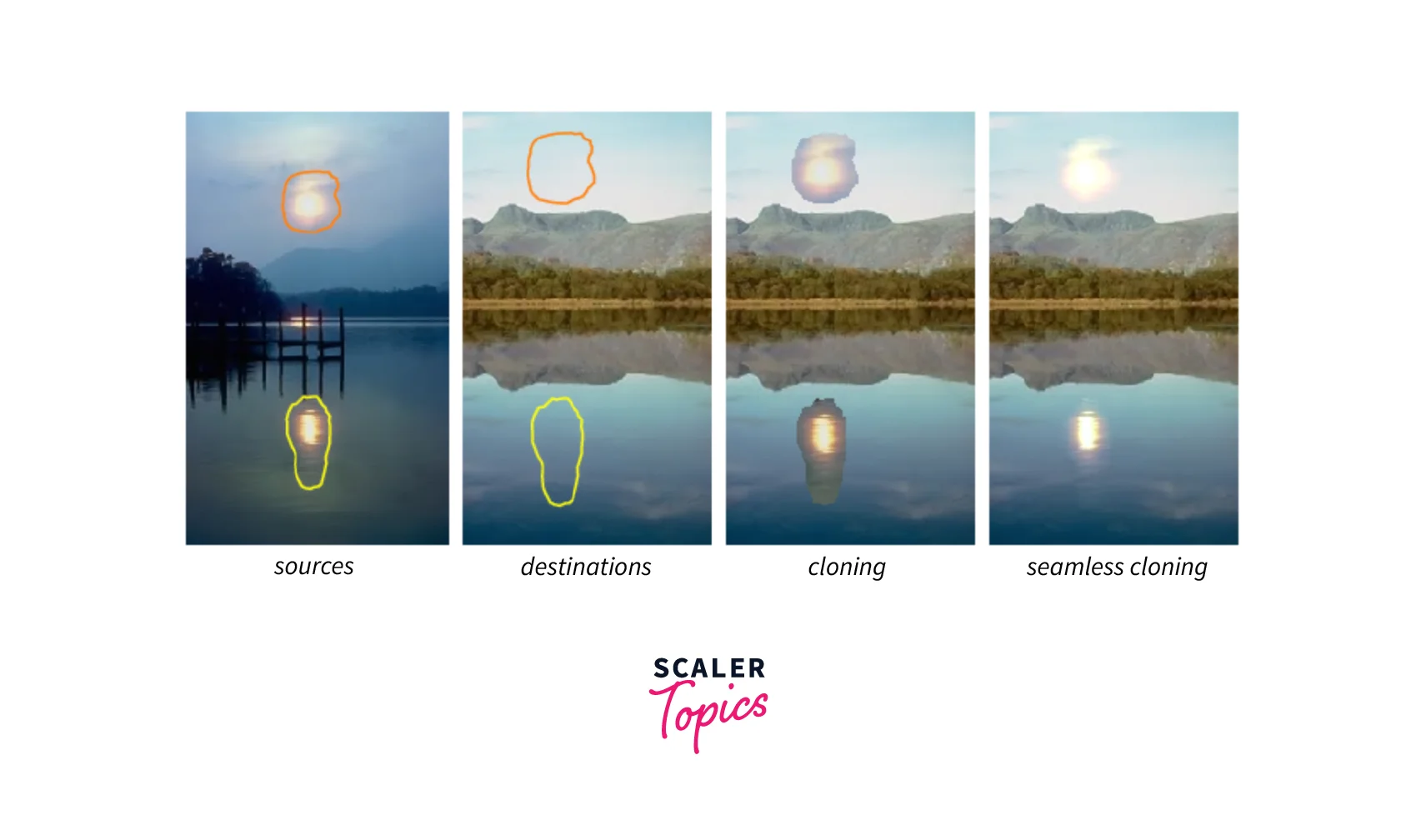Seamless Cloning in Image Processing
Overview
Image processing involves using algorithms to manipulate digital images, while seamless cloning is a technique used to blend images seamlessly for realistic composite images. OpenCV is a popular library used for implementing seamless cloning and other image processing techniques.
Introduction
Seamless cloning is a technique used in image processing to blend two or more images seamlessly to create a composite image that appears natural and realistic. It involves algorithms and techniques that manipulate digital images, including Poisson blending, texture synthesis, gradient domain blending, and Laplacian pyramid blending, among others. This technique is used in a variety of applications, including image editing, panoramic stitching, augmented reality, and face swapping. OpenCV is a popular library used to implement seamless cloning and other image processing techniques.
What is Seamless Cloning?
Seamless cloning is a technique used in image processing and computer vision to transfer an object from one image onto another while maintaining a seamless and natural appearance. This involves selecting an object in an image and seamlessly blending it into a target image, without any noticeable edges or artifacts. Seamless cloning is often used for image compositing and has applications in digital art, photo editing, and visual effects. It is typically implemented using algorithms such as Poisson blending and gradient-domain blending.

Types of Seamless Cloning
Texture Synthesis-based Seamless Cloning
Texture synthesis-based seamless cloning is a technique that involves synthesizing a new texture to replace the region that needs to be cloned. This method works by analyzing the texture of the surrounding area and generating a new texture to replace the region that needs to be cloned. The new texture is then blended with the target image to produce a seamless and natural-looking result. Texture synthesis-based seamless cloning is useful in situations where there is no suitable source image to clone from, such as in cases where the region to be cloned contains a complex pattern.
Poisson Equation-based Seamless Cloning
Poisson equation-based seamless cloning is a technique that involves solving a Poisson equation to transfer the gradient information from the source image to the target image. This method works by computing the gradients of the source image and target image, and then solving a Poisson equation to transfer the gradient information from the source image to the target image. The result is a seamless and natural-looking blend between the source and target images. Poisson equation-based seamless cloning is useful in situations where the source and target images have similar texture patterns.
Exemplar-based Seamless Cloning
Exemplar-based seamless cloning is a technique that involves finding an exemplar region in the source image that closely matches the region to be cloned in the target image. This method works by searching the source image for a region that has similar texture, color, and gradient information to the region to be cloned in the target image. The exemplar region is then blended with the target image using a Poisson blending technique to produce a seamless and natural-looking result. Exemplar-based seamless cloning is useful in situations where the source image contains a region that closely matches the region to be cloned in the target image.

Seamless Cloning Techniques
There are several seamless cloning techniques, some of which include:
Gradient Domain Blending
Gradient domain blending is a technique used in seamless cloning that involves blending two images based on their gradients. This method works by computing the gradients of the source and target images, and then blending them using a gradient-domain fusion technique. The result is a seamless and natural-looking blend between the source and target images, with smooth transitions and no visible artifacts.
Laplacian Pyramid Blending
Laplacian pyramid blending is another technique used in seamless cloning that involves blending two images based on their Laplacian pyramids. This method works by decomposing the source and target images into a series of Laplacian pyramids, which are then blended at each level of the pyramid. The result is a seamless and natural-looking blend between the source and target images, with smooth transitions and no visible artifacts. Laplacian pyramid blending is particularly useful for blending images that have different resolutions or sizes.
Multiband Blending
Multiband blending is a seamless cloning technique used to blend two images based on their frequency bands. This method works by decomposing the source and target images into a series of frequency bands using a Fourier Transform or a Wavelet Transform. The low-frequency bands contain coarse information, while the high-frequency bands contain fine details such as edges and textures.
The blending process starts with the low-frequency bands, where the two images are simply averaged. Then, the high-frequency bands are blended using a weighting function that gradually changes from one image to the other. This results in a seamless and natural-looking blend between the source and target images, with smooth transitions and no visible artifacts. Multiband blending is particularly useful for blending images with complex structures or textures.
Algorithms for Seamless Cloning
There are several algorithms used for seamless cloning, some of which include:
Standard Algorithms
Poisson blending: This is a standard algorithm that uses the Poisson equation to blend two images seamlessly. It works by solving a set of linear equations that enforce continuity at the boundaries between the source and target images. The resulting blend is smooth and natural-looking.
Texture synthesis: This is another standard algorithm used for seamless cloning that works by synthesizing new textures from the source image and using them to fill in the target image. It involves analyzing the texture properties of the source image and then synthesizing new textures that match those properties. The resulting blend is seamless and preserves the texture details of the source image.
Machine Learning-based Algorithms
Deep neural networks: These are machine learning-based algorithms that use convolutional neural networks (CNNs) to learn the mapping between the source and target images. The neural network is trained on a large dataset of image pairs and learns to generate the missing content in the target image based on the source image. The resulting blend is highly realistic and preserves the structure and details of the source image.
Seamless Cloning in OpenCV
Seamless cloning is a feature of the OpenCV library that allows for the seamless blending of two images. OpenCV provides a range of algorithms for seamless cloning, including Poisson blending, texture synthesis, and gradient domain blending.
The seamless cloning function in OpenCV takes two images as input, a source image and a destination image, and blends them seamlessly, with the option to specify the region of interest (ROI) in the source and destination images. The resulting blend is a natural-looking image that preserves the details and textures of the source image while seamlessly integrating it into the destination image.
Overall, the seamless cloning function in OpenCV is a powerful tool for a range of image processing applications, including image editing, object removal, and image compositing.
Applications of Seamless Cloning
seamless cloning is a versatile technique with numerous applications in image processing, providing the ability to blend images seamlessly and create high-quality composite images.
Image Editing
One of the primary applications of seamless cloning is in image editing, particularly for removing unwanted objects or replacing backgrounds in an image. For example, if there is an unwanted person or object in a photo, seamless cloning can be used to remove them and fill in the space with the surrounding background. It can also be used to replace the entire background with a new one, providing a more appealing composition.
Panoramic Stitching
Seamless cloning is widely used in panoramic stitching to blend multiple images seamlessly, creating a panoramic view. The technique is particularly useful in aligning and blending the overlapping areas of multiple images to create a smooth transition. The process involves selecting a set of key points in each image and using them to align the images before applying seamless cloning to blend them.
Augmented Reality
Seamless cloning is also used in augmented reality applications to blend virtual objects into a real-world scene, providing a more realistic and natural-looking composition. For example, in a mobile game that involves placing virtual objects on a real-world surface, seamless cloning can be used to blend the virtual object with the surrounding environment, providing a more immersive experience.
Face Swap
Face swapping is another popular application of seamless cloning, where one person's face is replaced with another person's face, creating a fun composite image. The technique involves using seamless cloning to blend the target face with the source image, aligning the facial features and skin tones to create a convincing composite image.
Challenges and Future Directions
- Complexity: One of the biggest challenges in seamless cloning is the complexity of the algorithms involved, which can make it difficult to achieve real-time performance on lower-end hardware.
- Quality: Another challenge is achieving high-quality results, particularly when dealing with complex images or when trying to blend images with very different content.
- Scalability: Seamless cloning techniques may struggle with scalability when dealing with very large images or when trying to clone across multiple images at once.
- Ethics: The increasing use of seamless cloning for image editing and manipulation raises ethical concerns, such as the potential for the technology to be used for deception or to manipulate public opinion.
- Advancements: The future of seamless cloning lies in the continued development of machine learning-based techniques, which have the potential to greatly improve the quality and performance of these algorithms. Additionally, the integration of seamless cloning with other technologies such as augmented reality and virtual reality could open up new avenues for creative expression and digital experiences.
Conclusion
- Seamless cloning is a powerful technique in image processing that enables users to seamlessly blend different images.
- There are various techniques and algorithms for seamless cloning, such as Poisson blending, texture synthesis, gradient domain blending, and multi-band blending.
- Seamless cloning has various applications, including image editing, panoramic stitching, augmented reality, and face swapping.
- Challenges in seamless cloning include preserving image quality, avoiding artifacts, and handling complex image content.
- Future directions for seamless cloning include the development of more advanced algorithms and techniques, as well as the integration with other technologies such as machine learning and virtual reality.
